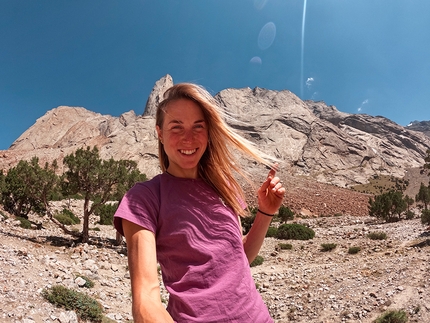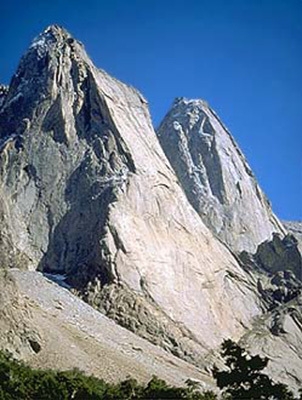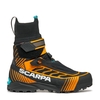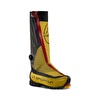New Romanian climb on Pamir Pyramid in Karavshin valley, Ak-su, Kyrgystan
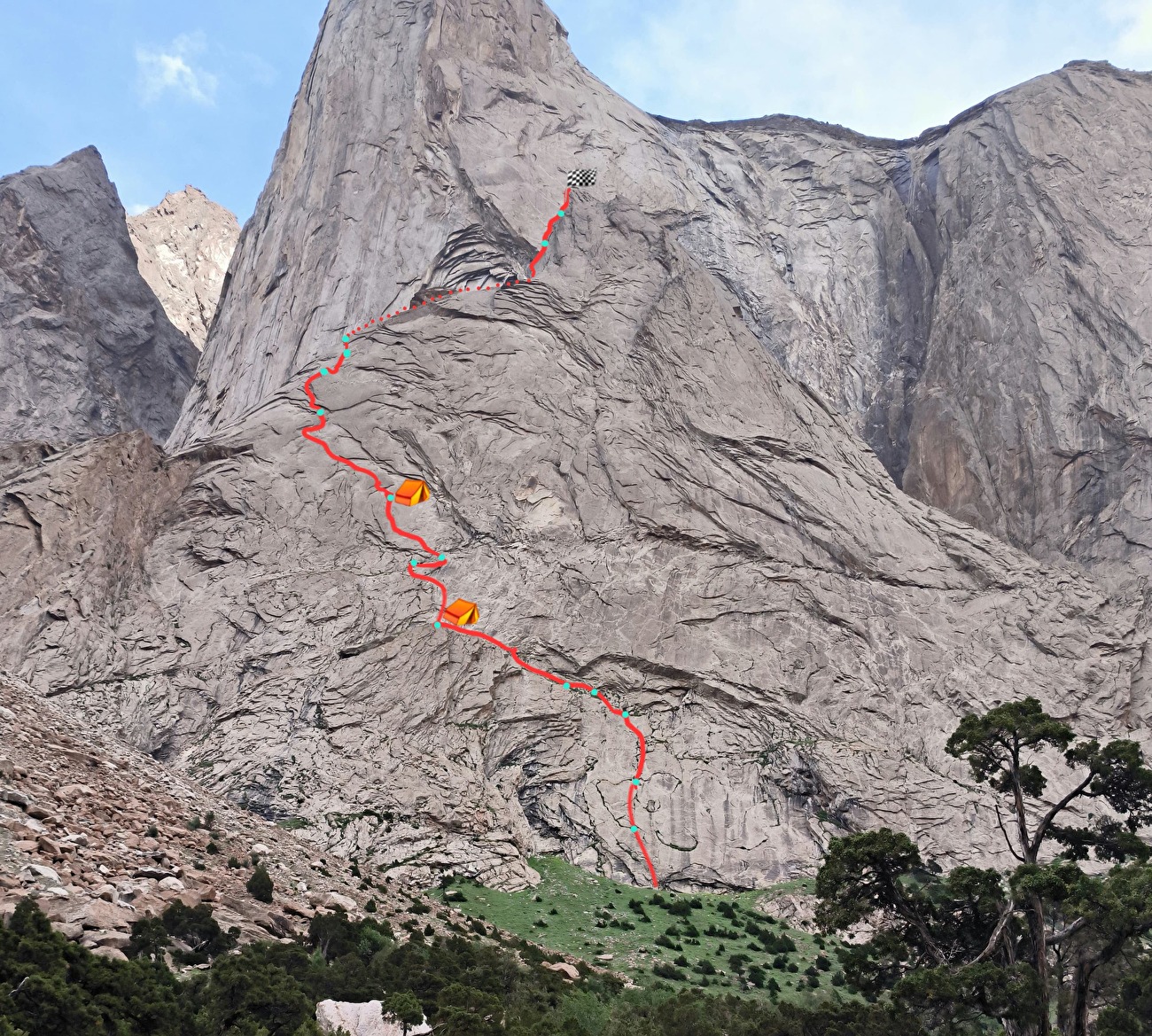
 1 / 12
1 / 12 Alex Manoliu archive
Alex Manoliu archive
In July 2024, my good friend and colleague from the Romanian Alpine Club Bucharest Papa Ionut and I went on a climbing expedition to the Ak-su Valley, Karavshin, Kyrgyzstan. Attracted by the wilderness of the area and the adventures that awaited, we arrived at Base Camp on July 2nd, after four long days of transfers and trekking. The journey itself was quite an adventure.
As expected, the weather was not easy-going, each day starting with relatively good conditions, followed by rain in the afternoon, sometimes a lot of it. In fact, there was so much rain that the rock faces turned into proper waterfalls.
When we left home, we had Perestroicrack as our main goal in mind and, if everything went well, planned to open a new line in the area. We soon realised however that this plan would have to change quite quickly.
Hunting for a good weather window to attempt some big lines, the days passed by quickly. Prepared with a backup plan and a portaledge, after eight days of waiting and only one route climbed (Voie Droite), we started developing a new line on Pamir Pyramid, as this objective was closer to Base Camp and offered an easier retreat.
We opened and fixed five pitches up to a ledge where we planned to establish an Advanced Base Camp with our portaledge. After four more days of bad weather, we launched our push, planning to spend six days on the wall. We hauled 24 liters of water, food and gear, ensuring we had enough provisions to wait out the storms and stay fed and hydrated. Hauling was very hard as the route is mostly slabby.
From that point, in five days we managed to open only 4 more pitches to an overhang with leftwards leaning dihedral, which contained loose blocks and dangerous flakes. Throughout our time on the wall, we faced the same weather, which permitted us to climb only three to four hours a day. We struggled to keep our spirits high on our little ledge, moving the camp again and hoping for a good day to push for the summit. Unfortunately, that day never came and, after more rain, we decided to descend.
Of course, after eight hours of retreat the weather improved significantly, making us frustrated with our luck. In the following days, we continued to encounter bad weather, but one more day of relatively good conditions finally appeared. It would be our last chance to finish the line. At this point, we were sure we didn’t have time to attempt any other routes, so we decided to play our last card. We had only 2 more days in BC.
We packed as light as possible, planning to access our highest point and climb up to the ridge. We left camp at 3 a.m., walked two hours across the scree field, and after two more hours of sideways rappels and some shenanigans, we reached our previous highpoin. We pulled the ropes and gave it hell, mostly free climbing from here, although some points of aid still needed.
We passed the overhanging dihedral and then the terrain above looked a bit more promising. We climbed two more pitches and reached the final slabs, which proved to be quite demanding and very difficult to protect. We mainly used birdbeaks as protection.
Exhausted and with ominous clouds looming above, we reached the summit. We began descending via the normal route after rappelling from Perestroicrack. With raindrops falling on us, we reached Base Camp after 2.5 hours. We'd done it!
The route is approximately 700 meters long and consists of a total of 13-14 pitches. 11 of the pitches are entirely new terrain, and the last two pitches ( or 3) are shared with the first two of Perestroicrack (up to Pamir Pyramid). The route is very well equipped, and at any point you can retreat from it. That was our main idea - to develop a route that can be attempted in changing weather, as we experienced during our time there.
All the bolts are 8mm stainless steel. The wall proved difficult to protect with trad gear, as we mostly followed slabs due to the fact that there are other routes arround and the rock was not the best. We had to use bolts quite often. The existing routes on the wall already "used" the splitters. :-)
There are three sections on the route where we relied on bolts for progression. However, with good weather and conditions, we believe these sections can be freed. We are certain that the route can be climbed free in the future, but it will be quite hard. Some pitches have been freed, while the harder ones have not. The route itself awaits a continuous ascent from start to finish, as we did not have more time to complete it.
We believe it's a good alternative to other major objectives in the area. As far as we know, it is one of the best-equipped routes in Aksu area. Note that not all the bolts or pitons are depicted in the route topo.
In the end, we did the best we could and our decision to change the initial plan was good. In the period we stayed in BC no other team made a complete ascent of Perestroicrack, even if there were like 6-7 attempts by various strong teams.
Alex Manoliu, Ionut Papa



 Copia link
Copia link
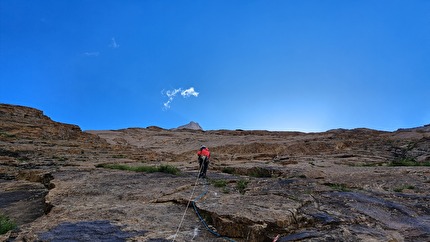
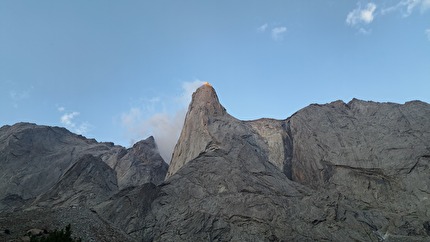
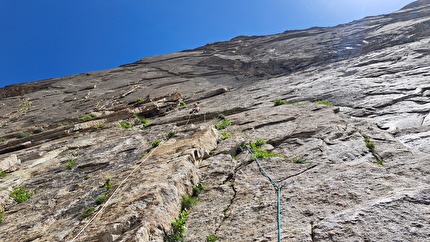

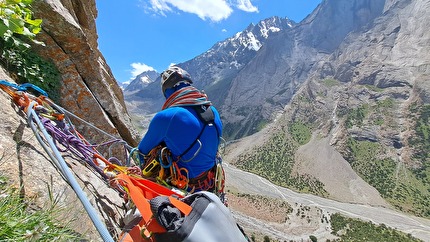


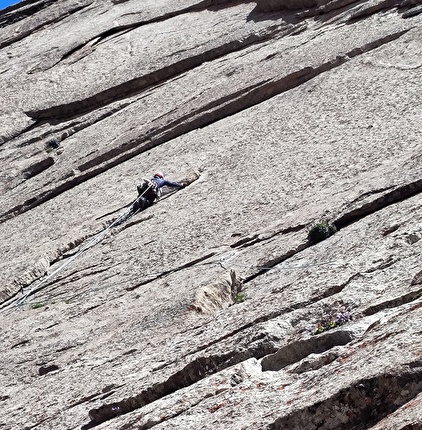
 See all photos
See all photos